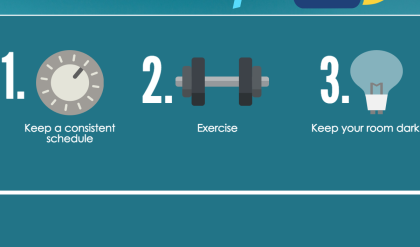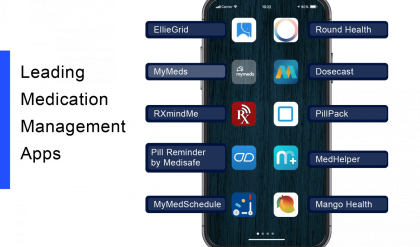
Your Guide to Affordable Mental Health Services: Navigating the Maze to Wellness
Finding affordable mental health services can feel like navigating a labyrinth. High costs and limited access often create significant barriers, leaving many struggling in silence. But help is out there, and this guide is your compass to finding affordable and effective mental health support in your area. We’ll explore various options, bust common myths, and empower you to take control of your mental well-being without breaking the bank.
Understanding the Landscape: More Than Just Therapy
The term “mental health services” encompasses a wide range of options, extending far beyond traditional therapy sessions. Recognizing this diversity is crucial to finding the best fit for your needs and budget. Think beyond the private therapist’s office: community resources, online platforms, and innovative support systems offer surprisingly affordable solutions.
1. Unlocking the Power of Community Resources:
Your community is a treasure trove of underutilized mental health support. These resources often operate on a sliding scale fee or are entirely free, making them incredibly accessible:
| Resource Type | Description | Cost | Accessibility |
|---|---|---|---|
| Community Mental Health Centers | Offer comprehensive services, including therapy, medication management, and support groups. | Varies, often sliding scale | Excellent, widespread |
| Faith-Based Organizations | Many churches, temples, and mosques offer counseling services or referrals. | Often free or donation-based | Varies by organization |
| Non-Profit Organizations | Dedicated to mental health, offering various programs and support. | Varies, often sliding scale | Varies by organization |
| Local Universities/Colleges | Often have counseling centers with reduced fees for students, and sometimes community members. | Varies, often reduced fees | Check local institutions |
2. Navigating the Digital Frontier: Online Mental Health Platforms:
The internet has revolutionized access to mental health care. Online therapy platforms and apps provide convenient and often more affordable options:
| Platform Type | Description | Cost | Pros | Cons |
|---|---|---|---|---|
| Online Therapy Platforms | Connect you with licensed therapists via video calls or messaging. | Varies, often subscription-based | Convenience, anonymity, wider therapist pool | Less personal connection, tech dependence |
| Mental Health Apps | Offer self-help tools, guided meditations, and mood trackers. | Free or subscription-based | Accessibility, daily support, tracking tools | Limited professional guidance |
3. Beyond Traditional Therapy: Exploring Alternative & Complementary Approaches:
Sometimes, alternative approaches can complement traditional therapy, offering additional support without significant financial strain:
| Approach | Description | Cost | Benefits | Considerations |
|---|---|---|---|---|
| Yoga & Mindfulness | Stress reduction techniques | Varies, often affordable classes | Improved mood, reduced anxiety | May not be a substitute for therapy |
| Support Groups | Connecting with others facing similar challenges | Often free or low-cost | Shared experience, reduced isolation | May not be appropriate for all conditions |
4. Insurance & Financial Assistance:
Don’t overlook the potential assistance available through your insurance provider. Many plans offer mental health coverage, and exploring this avenue is crucial:
- Check your policy: Understand your benefits and coverage limitations.
- Negotiate rates: Some therapists may offer reduced rates for cash payments or negotiate with insurance providers.
- Seek financial assistance: Many community mental health centers and non-profits offer financial assistance programs.
5. Advocating for Yourself: Tips for Success:
- Be proactive: Don’t hesitate to reach out and inquire about services.
- Be persistent: Finding the right fit may take time and effort.
- Don’t be afraid to ask questions: Clarify costs and services upfront.
- Prioritize your well-being: Your mental health is worth the investment.
Conclusion: Your Journey to Wellness Begins Now
Affordable mental health services are within reach. By understanding the diverse options available, actively seeking out resources, and advocating for yourself, you can embark on a path toward improved mental well-being without facing insurmountable financial barriers. Remember, seeking help is a sign of strength, not weakness. Start your journey today.

Additional Information
Expanding on “Your Guide to Affordable Mental Health Services in Your Area”: A Deeper Dive
While a guide to affordable mental health services provides a crucial starting point, a deeper analysis is needed to understand the complexities and limitations of the system. This expansion will focus on several key areas:
I. Understanding the Affordability Landscape:
The term “affordable” is subjective and depends heavily on individual circumstances. The guide should clarify its definition of affordability, specifying income brackets considered and the types of insurance accepted. For example, a service might be considered affordable for someone with good employer-sponsored insurance, but inaccessible to an uninsured individual or someone with a high deductible plan. Detailed breakdowns of cost per session for different service types (therapy, medication management, group therapy) are necessary, alongside information on sliding-scale fees and pro bono services.
Furthermore, “affordability” extends beyond direct costs. Consider the opportunity cost – time off work for appointments, transportation expenses, and childcare arrangements. These hidden costs can create significant barriers to accessing mental health care, disproportionately impacting low-income individuals and those with complex care needs.
II. Navigating the Insurance Maze:
The guide should provide a detailed analysis of insurance coverage for mental health in the specific area. This includes:
- Par provider networks: Many insurance plans only cover services from “in-network” providers. The guide should clarify how to find providers within a specific plan’s network and the potential cost differences between in-network and out-of-network care.
- Coverage limitations: Mental health parity laws aim for equal coverage of mental and physical health, but implementation varies. The guide should specify limitations like session limits per year, pre-authorization requirements, and restrictions on specific therapies or medications.
- Appeals process: Denial of coverage is common. The guide should outline the steps involved in appealing a denied claim, including necessary documentation and timelines.
III. Addressing Systemic Barriers:
The guide should move beyond simply listing services to analyze systemic factors impacting access:
- Provider shortages: Many areas suffer from a shortage of mental health professionals, particularly in underserved communities. This shortage can lead to long wait times for appointments, limited service availability, and increased competition for existing resources. Data on the provider-to-population ratio in the area would be valuable.
- Stigma and discrimination: Stigma surrounding mental health remains a significant barrier. The guide can address this by promoting understanding and providing resources for overcoming stigma.
- Cultural competency: The guide should highlight providers who are culturally competent and sensitive to the needs of diverse populations, including those from specific ethnic backgrounds, LGBTQ+ individuals, and people with disabilities.
- Technological access: Telehealth has expanded access, but digital literacy and reliable internet access are prerequisites. The guide needs to acknowledge the digital divide and offer alternative solutions for those lacking technology access.
IV. Case Studies and Examples:
Illustrative case studies can demonstrate the real-world challenges and successes of navigating affordable mental health care. For example:
- Case 1: A low-income single mother struggling to find affordable childcare while attending therapy appointments.
- Case 2: An individual with a high-deductible insurance plan facing financial hardship due to unexpectedly high out-of-pocket costs for medication.
- Case 3: A member of a marginalized community facing discrimination while seeking mental health services.
These examples help personalize the information and make it more relatable to potential readers.
V. Ongoing Evaluation and Updates:
The guide should not be a static document. Regular updates are crucial to reflect changes in provider availability, insurance coverage, and funding sources. This ensures that the information remains relevant and useful.
By expanding the guide with this additional analysis, it transforms from a simple directory into a comprehensive resource that empowers individuals to navigate the complex landscape of affordable mental health services and advocate for their needs. This approach will significantly enhance its value and impact.






